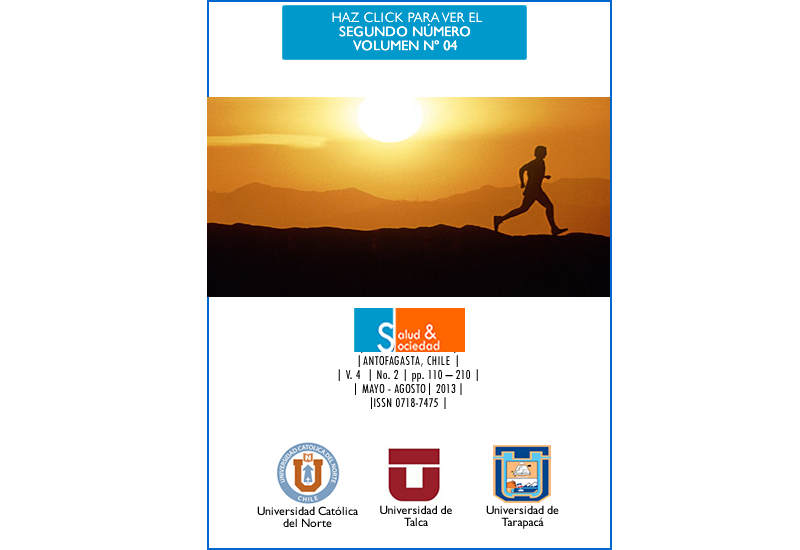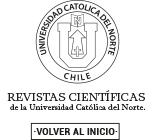Examen psicométrico exploratorio del millon clinical multiaxial inventory III (MCMI-III) en población penitenciaria chilena.
DOI:
https://doi.org/10.22199/S07187475.2013.0002.00005Palavras-chave:
MCMI-III, confiabilidad, validez, reclusos chilenos, reliability, validity, Chilean prison inmates,Resumo
Este estudio exploró las propiedades psicométricas del MCMI-III en una muestra (n = 123) de ofensores masculinos adultos chilenos recluidos por la comisión de delitos sexuales, delitos contra las personas, y delitos contra la propiedad. Específicamente, examinó su validez concurrente y capacidad discriminante, así como su confiabilidad. Las escalas de personalidad del MCMI-III tuvieron moderada validez concurrente con las dimensiones del Modelo de Cinco Factores medidas por el NEO-FFI; además, el MCMI-III demostró adecuada capacidad discriminante cuando los sujetos recluidos fueron comparados con pacientes clínicos. Sin embargo, el MCMI-III mostró modesta consistencia interna y estabilidad temporal, lo cual advirtió que la motivación, oposicionismo y deseabilidad social son variables relevantes en ofensores recluidos. Estos hallazgos, parcialmente consistentes con los reportados por otros investigadores, sugieren que el MCMI-III puede ser un instrumento útil para evaluar el funcionamiento psicológico de sujetos forenses chilenos pero que se requiere trabajo adicional para evaluar sus propiedades psicométricas en esta población.
This study explores the psychometric properties of the MCMI-III in a sample (n = 123) of Chilean adult male offenders imprisoned for the perpetration of property, personal, and sexual offenses. Specifically, it examined the MCMI-III’s concurrent and discriminant validity as well as its reliability. The MCMI-III personality scales had moderate concurrent validity with the dimensions of the Five-Factor Model as measured by the NEO-FFI, but they had an adequate discriminant capacity when the prison inmates were compared with clinical patients. The MCMI-III also showed modest internal consistency and test-retest stability, which demonstrate that motivation, oppositional behavior and social desirability are relevant variables in prison inmates. These findings, which are partially consistent with those reported by other researchers, suggest that the MCMI-III may be a useful instrument to assess the psychological functioning of Chilean forensic populations, but further work is required to evaluate the test’s psychometric properties in these populations.
Referências
American Psychiatric Association (2000). Diagnostic and Statistical Manual of Mental Disorders (4th ed.), DSM-IV-TR. Washington: American Psychiatric Association.
Archer, R., Buffington-Vollum, J., Vauter, R., y Handel, R. (2006). A survey of psychological test use among forensic psychologists. Journal of Personality Assessment, 87(1), 84 - 89.
Archer, R., Vauter, R., y Zoby, M. (2006). Introduction to forensic uses of clinical assessment instruments. En R. Archer (Ed.), Forensic Uses of Clinical Assessment Instruments (pp. 1-18). New Jersey: Lawrence Erlbaum Associates.
Bagby, R. y Marshall, M. (2005). Assessing response bias with the MCMI modifying indices. En R. Craig (Ed.), New Directions in Interpreting the Millon Clinical Multiaxial Inventory-III (pp. 227-247). New Jersey: Wiley.
Bennet, T., Holloway, K, y Farrington, D. (2008). The statistical association between drug misuse and crime: A meta-analysis. Aggression and Violent Behavior, 13, 107-118.
Bermúdez-Fernández, J. (2006). Efectos psicológicos del encarcelamiento. En J. Sierra, E.Jiménez y G. Buela-Casal (Eds.), Psicología Forense: Manual de Técnicas y Aplicaciones (pp. 348-371). Madrid: Biblioteca Nueva.
Boden, J., Fergusson, D., y Horwood, J. (2012). Alcohol misuse and criminal offending: Findings from a 30-year longitudinal study. Drug and Alcohol Dependence, http://dx.doi.org/10.1016/j.drugalcdep.2012.07.014
Cardenal, V., Sánchez, M., y Ortiz-Tallo, M. (2007). Los trastornos de personalidad según el modelo de Millon: una propuesta integradora. Clínica y Salud, 18(3): 305-324.
Choca, J. (2010). Interpretive Guide to the Millon Clinical Multiaxial Inventory (3rd ed.) Washington: American Psychological Association.
Cohen, L., Watras, S., McGeoch, P., Poznansky, O., Itskovich, Y., Murphy, S., Klein, E., Cullen, K., y Galynker, I. (2002). Impulsive personality traits in male pedophiles versus healthy controls: Is pedophilia an impulsiveaggressive disorder? Comprehensive Psychiatry, 43(12), 127-134.
Cooper, D. (1994). Delincuencia común en Chile. Santiago: LOM Ediciones.
Costa, P. y McCrae, R. (1985). The NEO Personality Inventory Manual. Odessa: Psychological Assessment Resources.
Costa, P. y McCrae, R. (1989). The NEOPI/NEO-FFI manual supplement. Odessa: Psychological Assessment Resources.
Costa, P. y McCrae, R. (1990). Personality disorders and the five-factor model of personality. Journal of Personality Disorders, 4, 362-371.
Dyer, F. (2008). Using the Millon inventories in forensic psychology. En T. Millon y C. Bloom (Eds.), The Millon Inventories (2nd ed., pp. 177-198). New York: Guilford.
Fernández-Montalvo, J. y Echeburúa, E. (2008). Trastornos de personalidad y psicopatía en hombres condenados por violencia grave contra la pareja. Psicothema, 20(2), 193 - 198.
Haddy, C., Strack, S., y Choca, J. (2005). Linking personality disorders and clinical syndromes on the MCMI-III. Journal of Personality Assessment, 84(2), 193-204.
Heilbrun, K., Marczyk, G., DeMatteo, D., Mack-Allen, J. (2007). A principlesbased approach to forensic mental health assessment: Utility and update. En A. Goldstein (Ed.), Forensic Psychology. New Jersey: John Wiley y Sons.
John, O., y Soto, C. (2007). The importance of being valid: Reliability and the process of construct validation. En R. Robins, R. Fraley, y R. Krueger (Eds.), Handbook of Research Methods in Personality Psychology (pp. 461- 494). New York: Guilford.
Jones, S., Miller, J., y Lynam, D. (2011). Personality, antisocial behavior, and aggression: A meta-analytic review. Journal of Criminal Justice. doi: 10.1016/j.jcrimjus.2011.03.004
Kline, P. (2000). Handbook of Psychological Testing (2nd ed.). London: Routledge.
Kunst, H. y Hoyer, J. (2003). Psychometrische analysen von IIP und NEO-FFI bei Straftätern Diagnostica, 49, 1, 24-33.
Lehne, G. (2009). The NEO Personality Inventory and the Millon Clinical Multiaxial Inventory in the forensic evaluation of sex offenders. En P.Costa y T. Widiger (Eds.), Personality Disorders and the Five-factor Model of Personality (2nd ed., pp. 269-282). Washington: American Psychological Association.
Madsen, L., Parsons, S., y Grubin, D. (2006). The relationship between the five-factor model and DSM personality disorder in a sample of child molesters. Personality and Individual Differences, 40, 227-236.
Millon, T. (1994). Millon Clinical Multiaxial Inventory-III (MCMI-III) Manual. Minneapolis: National Computer Systems.
Millon, T. y Davis, R. (1998). Trastornos de Personalidad: Más allá del DSM-IV. Barcelona: Masson.
Millon, T., Davis, R., y Millon, C. (1997). Millon Clinical Multiaxial Inventory-III (MCMI-III) Manual (2nd ed.). Minneapolis: National Computer Systems.
Nunnally, J. (1978). Psychometric Theory (2nd ed.). New York: McGraw-Hill.
Paulhus, D. y Vazire, S. (2007). The selfreport method. En R. Robins, R. Fraley, y R. Krueger (Eds.), Handbook of Research Methods in Personality Psychology (pp. 224-239). New York: Guilford.
Piquero, A., Farrington, D., y Blumstein, A. (2007). Key Issues in Criminal Career Research. New York: Cambridge University Press.
Rossi, G., Van der Ark, L., y Sloore, H. (2007). Factor Analysis of the DutchLanguage Version of the MCMI-III. Journal of Personality Assessment, 88(2), 144-157.
Saulsman, L. y Page, A. (2004). The fivefactor model and personality disorder empirical literature: A meta-analytic review. Clinical Psychology Review, 23, 1055-1085.
Stoner, J. (2008). Using the MCMI in correctional settings. En T. Millon y C. Bloom (Eds.), The Millon Inventories (2nd ed., pp. 196 - 243). New York: Guilford.
Strack, S. y Millon, T. (2007). Contributions to the dimensional assessment of personality Disorders using Millon’s Model and the Millon Clinical Multiaxial Inventory (MCMI-III). Journal of Personality Assessment, 89(1), 56-69.
Vinet, E., Fuentes, M., Melo, G., Muñoz, R., y Saiz, J. (1998). Necesidades y rasgos: Una réplica transcultural del estudio de Piedmont, McCrae y Costa (1992). Revista de Psicología Social y Personalidad, Vol. XIV, N° 1, 29-46.
Vinet, E., Saiz, J., Gempp, R., Benavente, P., Lutz, A., y Pezoa, S. (1999). Examen psicométrico del Inventario Clínico Multiaxial de Millon III (MCMIIII) en una muestra de pacientes chilenos. Terapia Psicológica, 17, 155-166.
Widiger, T. y Costa, P. (2009). Five-Factor Model personality disorder research. En P. Costa y T. Widiger (Eds.), Personality Disorders and the Fivefactor Model of Personality (2nd ed., pp. 59-87). Washington: American Psychological Association.
Widiger, T., Trull, T., Clarkin, J., Sanderson, C. y Costa, P. (2009). A description of the DSM-IV personality disorders with the five-factor model of personality. En P.Costa y T. Widiger (Eds.), Personality Disorders and the Five-factor Model of Personality (2nd ed., pp. 89-99). Washington: American Psychological Association.
Winberg, M. y Vilalta, R. (2009). Evaluación de trastornos de personalidad mediante el Inventario Clínico Multiaxial (MCMIII) en una muestra forense. Psicothema, 21(4), 610-614
Publicado
Como Citar
Edição
Seção
Los autores continúan como propietarios de sus trabajos, y pueden volver a publicar sus artículos en otro medio sin tener que solicitar autorización, siempre y cuando indiquen que el trabajo fue publicado originariamente en Revista Salud & Sociedad (ISSNe:0718-7475).



_(1).png)





